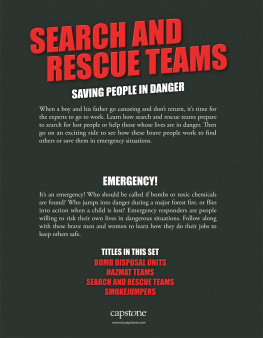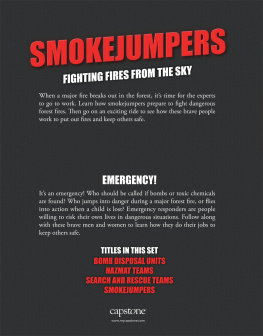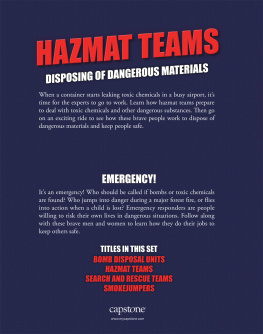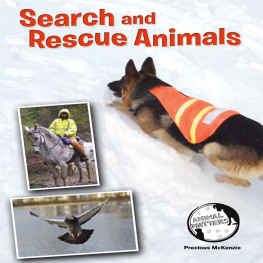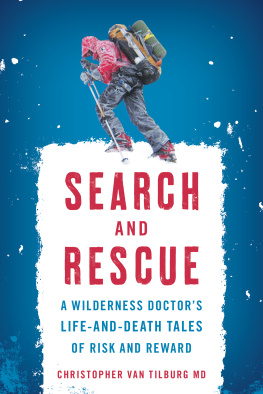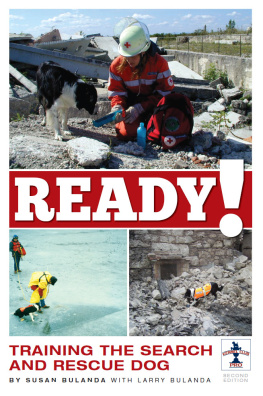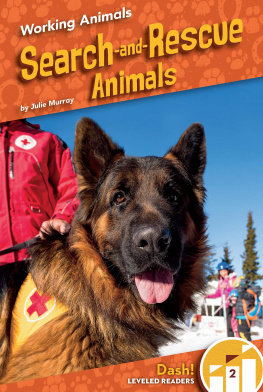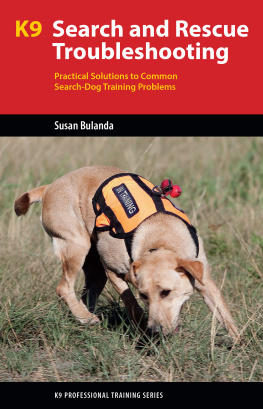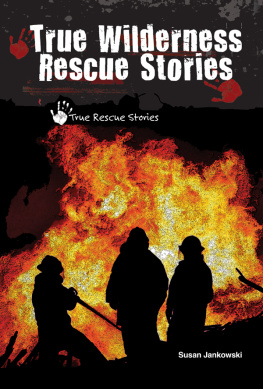SEARCH AND RESCUE IN ACTION
Even though the autumn day is too windy for canoeing, a father and son decide to risk it. When they do not return, a family member calls the police department. Immediately, the search and rescue (SAR) team springs into action.
The team arrives at the river and quickly figures out where the father and son set off from shore. After making an action plan, they break into groups and search all along the river. Suddenly, one group spots the father and son on shore.
In a flash, the rescue team gets to work. They check the boy and his father for any life-threatening injuries. Once the victims have been moved to a safer location, the SAR workers check them more thoroughly to decide if more treatment is required.
Every day, people all over the world end up in situations that require emergency rescue. These situations can involve , and others. Search and rescue workers are the brave men and women who put their lives on the line to save these people.
A quick response to natural disasters is essential for finding and helping survivors.
Chapter 1
PREPARATION AND TRAINING
Becoming an SAR worker takes a lot of work and specialized knowledge. Many SAR units are made up of on- or off-duty navigation knowledge.
Certain skills are necessary for every SAR worker, regardless of background. All SAR workers must have medical knowledge, outdoor survival skills, leadership skills, and the ability to stay calm in an emergency. SAR workers must be in good physical shape so that they can handle any situation, whether it is hiking through a rough mountain landscape or carrying an injured victim to safety. They must also be good navigators in order to search for victims. This means that they should be good at using maps and (GPS). It is also important for workers to have medical knowledge to provide basic care upon finding victims.
The qualifications to become an SAR worker or volunteer vary from department to department, but most require courses such as the National Outdoor Leadership Schools Wilderness First Responder course.
SAR workers practice navigating by going out into the wilderness.
FACT:
The first recognized SAR mission took place in 1656 following the shipwreck of the Vergulde Draeck. There were 193 people on board the ship that was wrecked off the coast of Western Australia.
Often, rescues will involve demanding physical challenges, whether on water, in the air, or on land. Most SAR teams have fitness requirements. New workers must pass a physical exam. Then they must stay in shape while on the team.
While some teams require certain courses and navigation. Most teams provide or encourage ongoing training to learn new skills or keep old ones sharp.
SAR training often involves learning how to rig ropes for rescue missions.
Depending on a persons role on the team, he or she may take specialized training courses. These team members may learn about emergency responses to terrorism or how to safely handle hazardous materials. The National Association of Search and Rescue (NASAR) provides many courses for SAR skills. The Federal Emergency Management Association (FEMA) provides Community Emergency Response Training (CERT).
Personal Protective Equipment
It is important for SAR workers to stay safe while rescuing others. To help with this, they wear or carry personal protective equipment, or PPE.
Typical Items Include:
- helmet
- safety glasses
- hearing protection
- work gloves
- boots
- water canteens
Since every scenario is different, not every emergency requires the same equipment. SAR workers carry PPE with them to be prepared for any situation. Sometimes they find themselves surprised by the gear they need. It is always safest to be prepared.
It is impossible to predict the exact emergencies that will arise for any given SAR team. One of the best ways for new members to prepare for a rescue is to practice in an imaginary situation. Field exercises and mock SAR missions put workers in emergency rescue scenarios and allow them to practice the skills they have learned.
Field exercises are a safe way to practice the skills learned in training.
FACT:
The National Association for Search and Rescue was founded in 1972. This organization represents all SAR volunteers.
In a mock SAR mission, no one is actually harmed or in danger. However, participants act as if the emergency is real so that they can practice how to respond to real victims. Sometimes practice missions combine many different problems that may arise. This helps workers be prepared for the worst-case scenario.
Even seasoned veterans participate in practice missions. It is important for them to keep their skills sharp. Plus, there are always new things to learn from each exercise. By mixing veterans with new recruits, field exercises help SAR teams learn to work together as a unit.
Physical training is very demanding to prepare workers for physically challenging emergencies.
Chapter 2
EMERGENCY RESPONSES
Different emergencies call for different SAR responses. When a water search.
In 2005 Hurricane Katrina was a natural disaster that required SAR operations. Detailed maps helped rescue workers plan their operations.
Land rescue refers to SAR missions that take place on land. These emergencies include missing persons, stranded persons, and natural disasters. Usually, the county sheriff is in charge of coordinating land rescues. Some land rescues require special training, such as high-angle rescue training.
State laws determine when air search and rescues can take place. Some air rescue teams are nonprofit organizations made up of volunteers. Air search may be necessary in missing persons cases or other situations involving large areas of land. Special tracking and navigation skills are required for this type of search.
Like air searches, state and regional laws state when water searches may take place. Like air search, many water search teams are made up of volunteers. Water search may be required to help boaters in danger. Workers on these teams must have strong swimming and boating skills.
SAR Planning Steps
Before an SAR mission can begin, team leaders must develop a plan of action.

